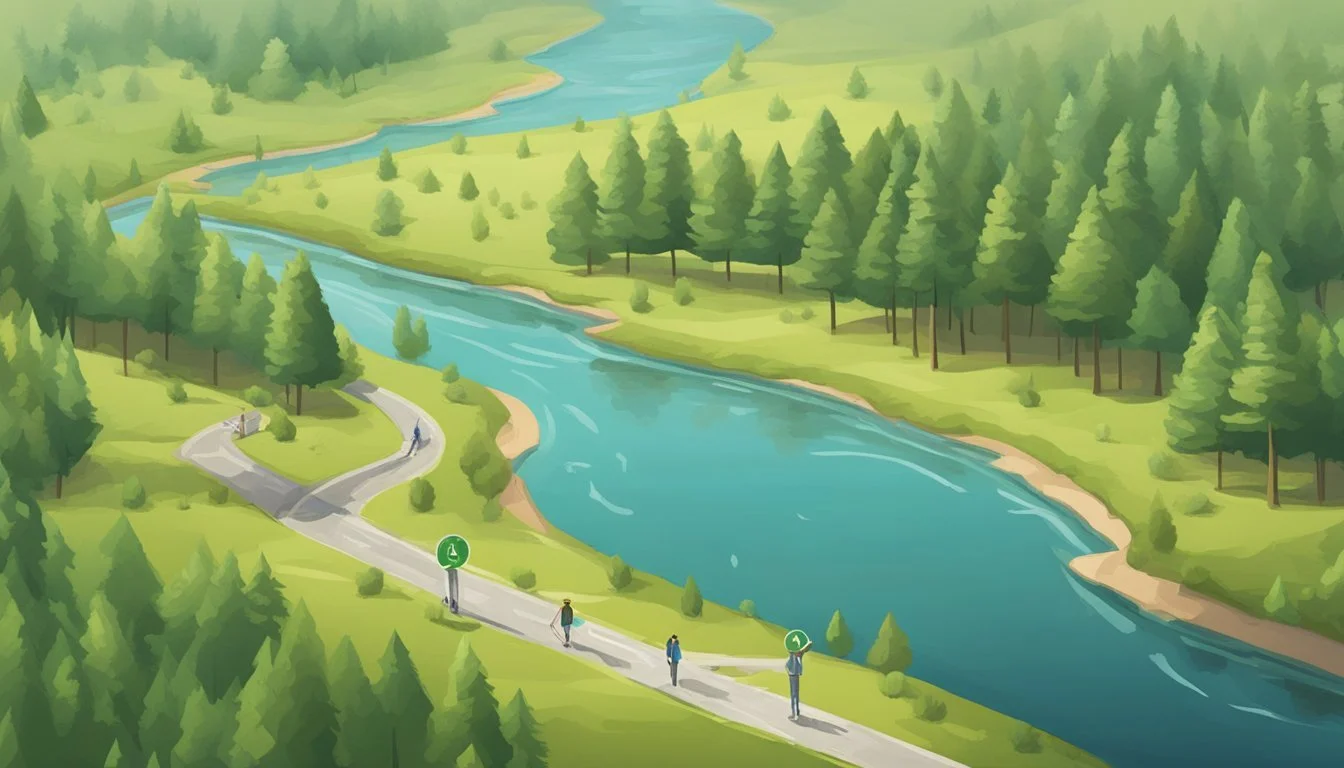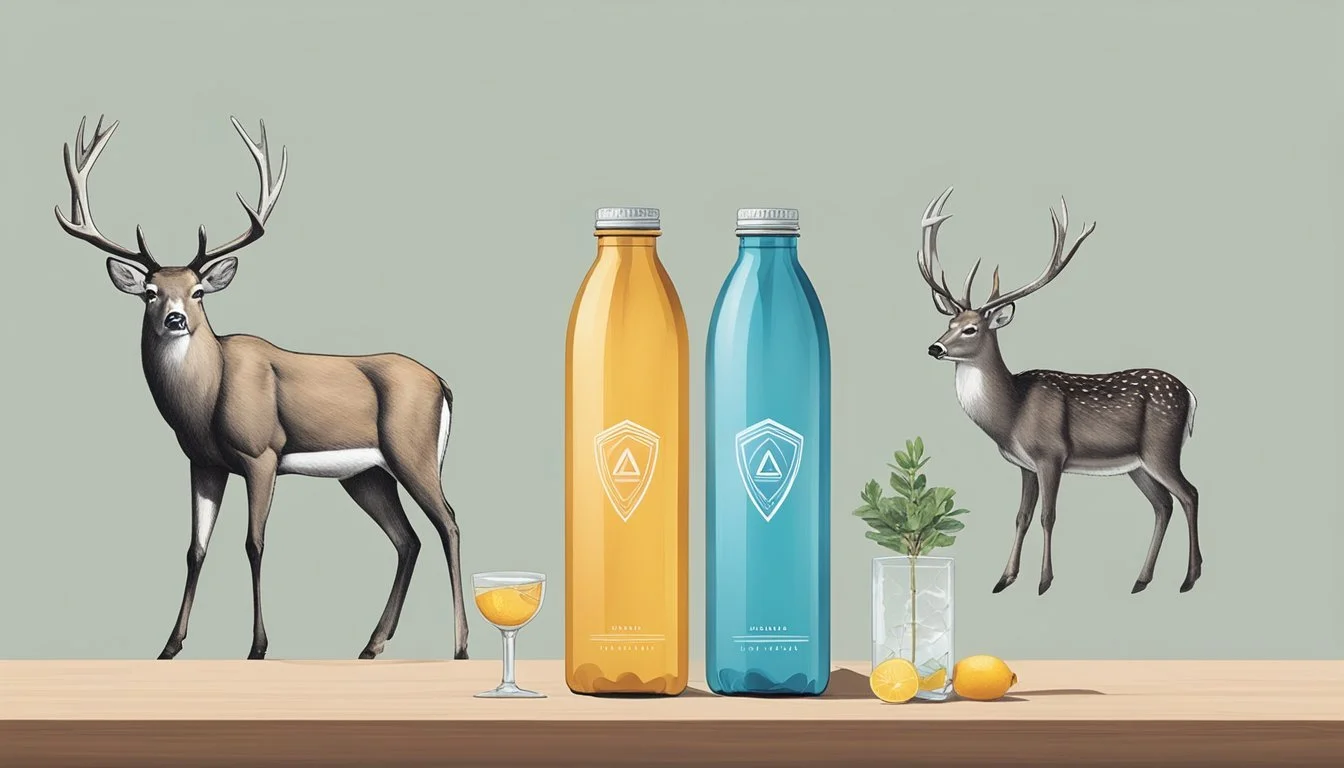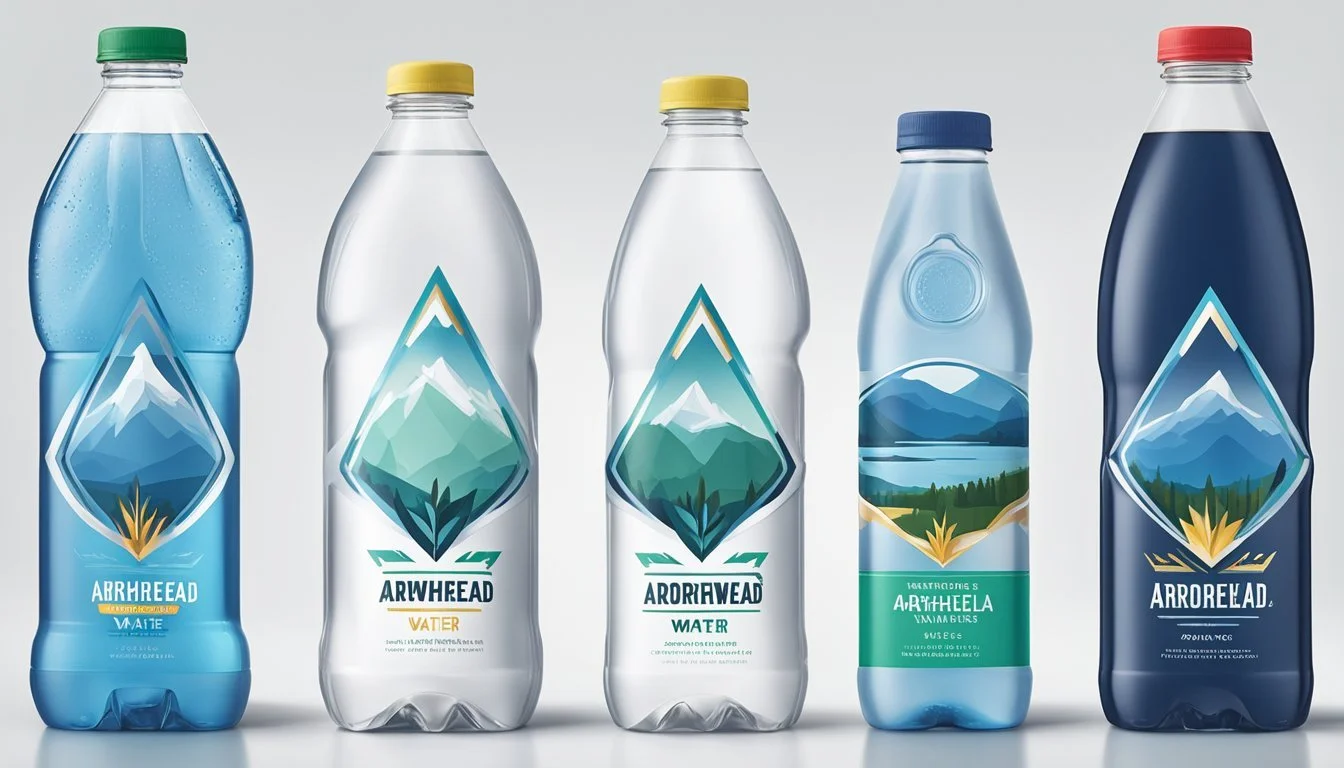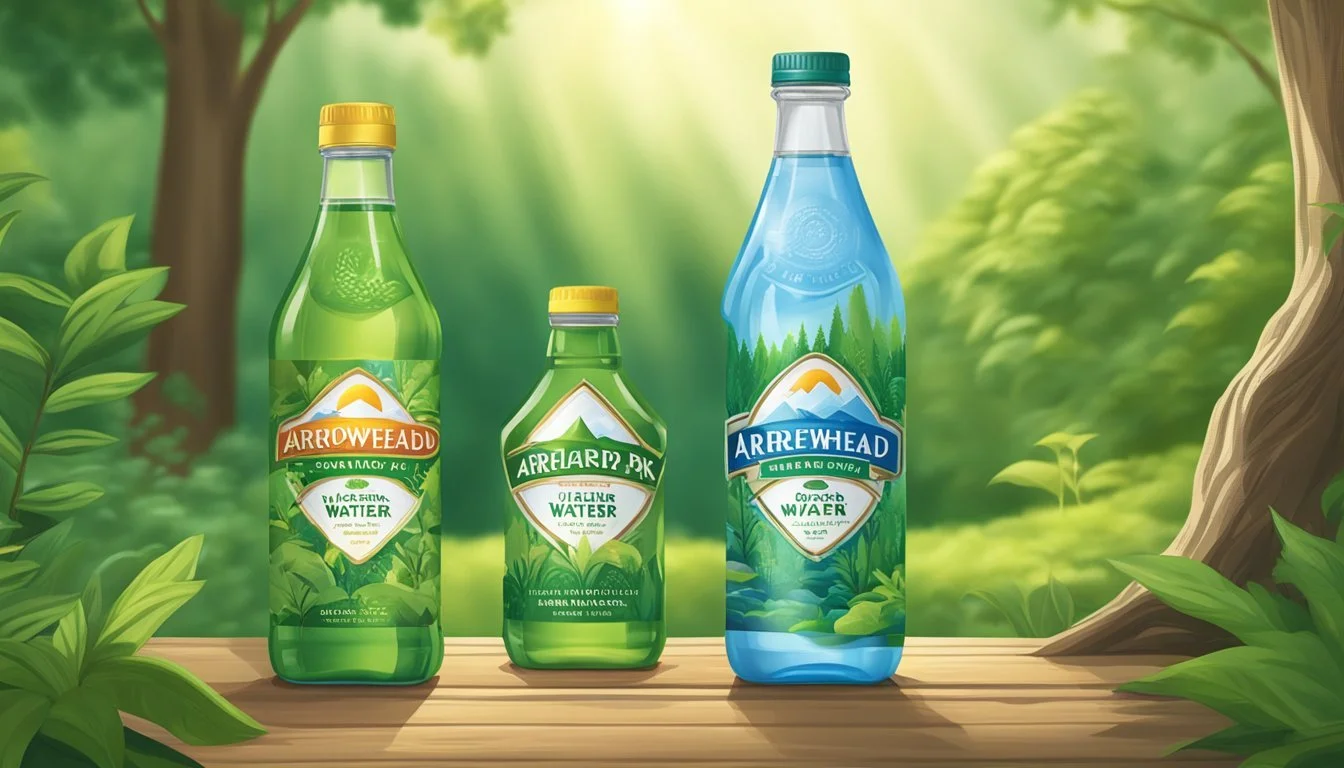Arrowhead vs. Deer Park Bottled Water
A Comprehensive Comparison
Comparing bottled water brands often leads to a debate over not only the taste but also the source and purity of the water. Arrowhead and Deer Park are two prominent brands that stand out in the supermarket aisles. Arrowhead, sourced from mountain springs across the western United States and Canada, is recognized for its affordability and wide availability. Although some consumers find it to be less than extraordinary in flavor, it remains a common choice for everyday hydration.
On the other hand, Deer Park, primarily sourced from the Eastern Seaboard, takes pride in offering 100% natural spring water. It claims to deliver a clean and crisp taste that resonates with its consumers. The brand is a part of Nestlé Waters, a dominant player in the bottled water industry, which suggests a level of confidence in their water quality practices and in providing a satisfactory product.
Examining these two brands, the consideration extends beyond taste to encompass factors such as the source of the water, the presence of any additives, and the environmental impact of the bottling process. It's essential to scrutinize these aspects to understand which brand may offer a superior product, or if the preference between Arrowhead and Deer Park boils down to personal taste.
Overview of Bottled Water
The bottled water industry offers an array of brands, each claiming to provide high-quality, purified water. Bottled waters vary widely in terms of source, filtration processes, and taste. The water sources for these products generally range from natural springs to municipal supplies.
Some key factors that distinguish one bottled water from another include:
Source: Water can be sourced from springs, artesian wells, or public water supplies.
Filtration: Methods such as reverse osmosis, distillation, and ultraviolet purification are used.
Additives: Certain brands add minerals for flavor or electrolytes for athletic performance.
Packaging: Options range from single-use plastics to recyclable and biodegradable materials.
Water brands like Arrowhead and Deer Park are recognized by their regional availability and specific sourcing claims. For example, Arrowhead sources its water from mountain springs in the western U.S. while Deer Park touts its 100% natural spring water from the Eastern Seaboard.
Consumers typically choose bottled water based on:
Personal taste preferences
Perceived purity and quality
Brand reputation
Environmental impact of the packaging
It's important to note that while most bottled waters undergo stringent filtering and quality checks, the presence of contaminants like PFAS chemicals has been a concern in some products. The bottled water industry continues to evolve with a focus on safety, sustainability, and meeting the diverse needs of consumers worldwide.
Exploring Arrowhead and Deer Park
In the world of bottled water, Arrowhead and Deer Park stand out for their history and product offerings. Each brand has its unique source and promises a taste of purity through their bottled products.
Brand History
Arrowhead traces its origins back to the 19th century and has established itself as a mainstay in the Western United States, particularly known for sourcing water from springs around the Arrowhead Mountain in California. It provides consumers with the promise of 100% mountain spring water, capitalizing on the natural filtration that spring water undergoes.
Deer Park, on the other hand, boasts East Coast origins dating back over a century. Deer Park prides itself on sourcing 100% natural spring water from carefully selected springs in the Eastern U.S., and it has become synonymous with East Coast bottled water.
Product Line
Arrowhead features a variety of products including:
Arrowhead Mountain Spring Water (its flagship product)
Distilled water options
Flavored and sparkling water varieties
They emphasize the natural origin of their water, which they state comes from 13 different springs to ensure a consistent taste and quality.
Deer Park also offers a diverse product line, such as:
Deer Park Natural Spring Water
Sparkling spring waters, available in different flavors
Distilled water for those who prefer or require it for specific uses
Deer Park further distinguishes itself by offering water in an array of container sizes, catering to different consumer needs, from personal consumption to large gatherings.
Sourcing and Water Quality
When comparing bottled water brands such as Arrowhead and Deer Park, the sourcing and resulting water quality are critical factors. Consumers look for the purity of water and whether it comes from protected springs or deep groundwater.
Spring Water vs. Groundwater
Arrowhead gets its water from various springs throughout the western United States. Conversely, Deer Park boasts that its water is sourced from natural springs along the Eastern Seaboard of the United States. Spring water is typically characterized by a natural filtration process as it emerges to the surface, potentially providing a unique mineral composition and taste. On the other hand, groundwater, which is often sourced from wells, may not pass through as many natural filters.
Contaminants and Purity
Contaminants such as heavy metals (like arsenic and lead) and PFAS chemicals are of great concern to consumers. Both Arrowhead and Deer Park undergo regular water testing to ensure compliance with federal and local quality standards.
Arsenic: While naturally occurring, levels must be kept below the EPA's maximum contaminant levels to avoid health risks.
Lead: A heavy metal that can leach from old pipes; bottled water brands are scrutinized to ensure lead-free products.
PFAS Chemicals: These synthetic chemicals are found in various consumer products and are resistant to breaking down in the environment and the human body.
The presence of these contaminants is regulated to ensure the water is safe for consumption. Both brands are required to provide water quality reports, detailing the levels of various substances found during testing.
Health and Safety Standards
When considering bottled water brands like Arrowhead and Deer Park, it is crucial to examine their adherence to health and safety standards to ensure the water is safe for consumption and free from health risks.
FDA Regulations
Both Arrowhead and Deer Park bottled waters are subject to the U.S. Food and Drug Administration (FDA) regulations, as it oversees the bottled water industry. The FDA stipulates standards for various types of bottled water, ensuring they are safe to drink and meet minimum public health requirements. This includes testing for contaminants that could compromise the immune system or lead to diseases such as diabetes. The FDA also ensures that the materials used in the water bottles, such as being BPA-free, do not pose health risks to consumers.
Health Risks: Monitored contaminants.
FDA Standards: Compliance with public health requirements.
Bottle Safety: Mandatory use of BPA-free materials.
Water Testing and Certification
Arrowhead and Deer Park conduct regular water testing, following FDA regulations to certify safety and quality. Additionally, both brands may undergo voluntary testing and certification by independent organizations, such as the International Bottled Water Association (IBWA), which has stringent standards and supports the commitment to provide safe and high-quality bottled water.
However, independent testing by Consumer Reports and other entities has revealed that some bottled water brands contain traces of chemicals, though not necessarily these specific brands. Such findings highlight the importance of ongoing testing and transparency in the bottled water industry.
Regular Testing: Ensures consistent quality and safety.
Voluntary Certification: May be pursued with organizations like IBWA.
Transparency: Essential for consumer trust regarding the product's safety.
Taste Profile Comparison
When analyzing bottled water, the two main factors that influence the consumers’ preference are the mineral content and the results from taste tests. These components significantly shape the taste profile of a brand.
Mineral Content
Arrowhead water is sourced from mountain springs and has a mineral profile that includes elements such as calcium, magnesium, and potassium. These minerals can give Arrowhead a distinct flavor, often described as fresh with a slight mineral aftertaste due to the natural processes at the spring sources.
Deer Park is also sourced from natural springs and contains a similar array of minerals. However, the different source springs can lead to subtle variations in mineral content and, consequently, in taste. Deer Park has been characterized by a clean, crisp taste that is slightly sweet due to its natural mineral content.
Taste Test Results
In blind taste tests, individuals might perceive differences between Arrowhead and Deer Park waters, which are influenced by the aforementioned mineral contents. Arrowhead's flavor is sometimes reported as being more pronounced compared to other brands, which could either be appealing or less preferred depending on personal taste.
Deer Park, contrastingly, has often been noted for its purity and balance in taste tests, making it a favorite among those who prefer a more neutral-flavored mineral water. This neutrality has contributed to its reputation for being a refreshing natural water choice.
Environmental Impact
When considering Arrowhead and Deer Park bottled water, one must take into account the environmental ramifications of their production and disposal methods.
Bottling Process
Arrowhead sources its water from springs and emphasizes their commitment to sustainability by using 50% recycled plastic (rPET) in their bottles. They implement a process designed to reduce carbon footprint and utilize BPA-free plastics to ensure safety.
Deer Park, on the other hand, boasts of its use of Eco-Shape® bottles, which require less plastic and are designed to be easier to crush for recycling purposes. Both companies ensure that their bottling processes follow stringent quality control measures, yet their impact on the environment is inevitably dictated by the materials they use and the efficiency of their production systems.
Plastic Waste and Recycling
Plastic Waste: Both Arrowhead and Deer Park produce plastic waste, a significant concern given its contribution to global pollution. Despite initiatives, a full switch to glass bottles, which are 100% recyclable, remains unimplemented.
Recycling: Both brands encourage consumers to recycle. Arrowhead's investment in rPET helps reduce dependence on new plastic production, while Deer Park's Eco-Shape® bottles are partly a response to the plastic waste challenge. However, effective recycling still relies heavily on consumer participation and local recycling capabilities.
Packaging and Marketing Strategies
Arrowhead and Deer Park, both established bottled water brands, employ distinct packaging and marketing strategies that reflect their respective brand identities and heritage. These strategies are vital to their market presence and consumer choice.
Labeling and Brand Perception
Arrowhead utilizes a label that features mountain imagery, signifying its source from mountain springs. This imagery is designed to convey a sense of purity and natural origin. Arrowhead's brand history is highlighted on its labels, connecting consumers with the brand’s long-standing presence in the market.
Deer Park, on the other hand, stresses its Eastern Seaboard roots. The brand's label boasts a green and white color scheme, which coupled with imagery of natural springs, aims to foster a perception of clean, unadulterated water. Nestlé, the parent company of Deer Park, emphasizes that it is 100% natural spring water, a claim that directly caters to health-conscious consumers.
Advertising Campaigns
The marketing campaigns of Deer Park and Arrowhead are tailored to their target demographics and are reflective of their brand identities. Deer Park has leveraged its affiliation with Nestlé to promote sustainability, often showcasing its efforts in reducing plastic use and endorsing recycling.
Arrowhead, owned by Nestlé until April 2021 when BlueTriton Brands acquired it, capitalized on regional loyalty, often marketing itself as a local brand despite its wide distribution. Its campaigns have highlighted the natural source of the water, which appeals to consumers looking for an authentic and clean water source.
Both brands have steered clear from glass bottles in their packaging, favoring more lightweight and transport-efficient options, though at times, this has drawn criticism over environmental concerns linked to plastic use. Neither Arrowhead nor Deer Park is currently associated with Coca-Cola.
The marketing strategies of both brands are influenced by their parent companies' histories and public perceptions, with both taking steps to address corporate malfeasance by focusing on environmental stewardship in their recent campaigns.
Consumer Preferences
Consumer preferences in the bottled water market reveal insightful trends and specific feedback that showcase the popularity and reception of various brands such as Arrowhead and Deer Park, as well as others like Evian and Fiji.
Purchasing Trends
Consumers tend to show a preference for bottled water based on factors such as taste, source credibility, and brand reputation. Arrowhead water, sourced from springs in the west, is favored in the Pacific regions of the United States. Deer Park, on the other hand, enjoys popularity on the East Coast due to its local sourcing there. Data shows that brands like Fiji and Evian, often labeled as premium waters, have a dedicated buyer base that values the exotic source and mineral content.
Dasani and Aquafina are popular amongst convenience buyers due to their widespread availability.
Voss and Acqua Panna have carved out a niche among upper-class consumers who prefer stylish packaging and smooth taste.
Smartwater stands out for its added electrolytes, appealing to health-conscious individuals.
Icelandic Glacial benefits from the perception of purity associated with its Icelandic origins.
Core Hydration and LIFEWTR have gained traction with their pH-balanced offerings and artistic packaging designs.
Comparing Consumer Reviews
Online platforms and consumer review sites offer a wealth of information regarding customer satisfaction with bottled water brands. Arrowhead reviews sometimes highlight a distinct taste that some consumers find less appealing compared to the crispness of Deer Park.
Flow, Boxed Water, and Ethos Water often receive positive remarks for their eco-friendly packaging.
La Croix, although a sparkling water brand, has been mentioned for its flavor variety, creating a different segment of enthusiasts.
Penta is noted for its ultra-purified water, though reviews are mixed when it comes to justifying its higher price point.
In reviews, some consumers express a marked preference for the mineral content and flavor profile of waters like Fiji, Evian, and Acqua Panna. The market's competitive nature is clear as these brands work to differentiate themselves through marketing efforts and product quality.
Alternatives to Bottled Water
While Arrowhead and Deer Park are popular choices for bottled water, consumers looking for hydration have several alternatives to consider. These options range from tap water to various filtration systems, providing both still and carbonated water choices.
Tap Water
Tap water is the most readily available and cost-effective alternative to bottled water. It's subject to strict regulations by the Environmental Protection Agency (EPA) in the United States to ensure safety and quality. Most municipal water supplies are treated to remove contaminants and, in some localities, are comparable in quality to bottled water.
Filtered Water Systems
People who are cautious about contaminants or are unsatisfied with the taste of tap water might consider filtered water systems. These systems come in various forms:
Pitchers and Dispensers: Often equipped with activated carbon filters that reduce certain contaminants and improve taste.
Under-Sink Systems: These are more permanent solutions that can incorporate more sophisticated technologies like reverse osmosis.
Whole-House Systems: Designed to purify water at the point it enters the home, ensuring clean water from every tap.
Filtered systems are known for their efficiency in providing purified water, which is free from most contaminants, including those not removed by standard municipal treatment like specific chemicals, heavy metals, and sediments.
Bottled Water Alternatives
For those who prefer the convenience of bottled water but are looking for alternatives with potentially different tastes or health benefits, the following options are available:
Alkaline Water: Claims to have a higher pH than standard drinking water, which some suggest can neutralize acid in the bloodstream.
Carbonated Water: Sparkling water like Topo Chico or Bubly is an option for those who enjoy the sensory experience of effervescence.
Nestlé Pure Life: This is a purified water, distinct from natural spring waters like Arrowhead and Deer Park, and undergoes a multistep purification process.
Reverse Osmosis Water: A type of purified water that has been filtered through a semipermeable membrane to remove ions and particles.
These alternatives to traditional bottled water like Arrowhead and Deer Park allow consumers to choose according to their taste preferences and perceived health benefits without relying solely on bottled products.
Future of Bottled Water
The bottled water industry is poised to evolve with shifting consumer preferences and technological advancements. The focus is increasingly on sustainable practices and enhanced product offerings.
Industry Trends
Health Consciousness: As consumers become more health-conscious, bottled waters offering added health benefits, such as electrolytes and minerals for better hydration, are gaining popularity. Brands such as SmartWater, which provides electrolyte-enhanced water, have set a precedent that others like Nestlé Pure Life, Deer Park, and Arrowhead are expected to follow.
Sustainability Efforts: In the United States, there is a growing demand for environmentally friendly packaging. The federal government and states are encouraging recycling and reduction in single-use plastics. This trend is compelling companies to explore biodegradable materials and to invest in recycling programs, affecting brands across America, including Deer Park and Arrowhead.
Innovations in Bottling
Smart Technology: The integration of smart technology in bottling is on the rise. Bottles with built-in filters and smart caps that track water intake are just a couple of examples. These innovations aim to not only improve hydration management but also to modernize the user experience.
Eco-Friendly Materials: There is a significant push towards using materials that have less impact on the environment. This includes the development of plant-based plastics and the utilization of recycled materials in bottling processes. Both of these initiatives are being adopted by industry leaders to create a more sustainable future.
The trajectory for bottled water producers is clear: innovate and adapt to meet consumer and regulatory demands for health and environmental stewardship.









